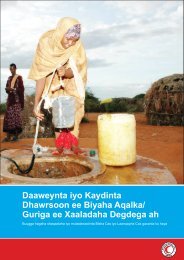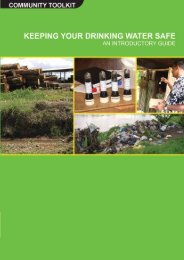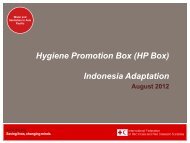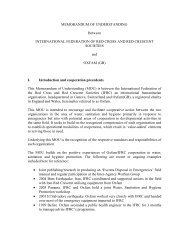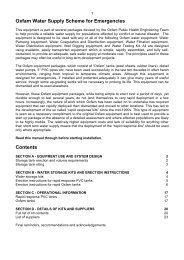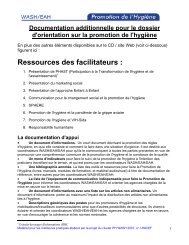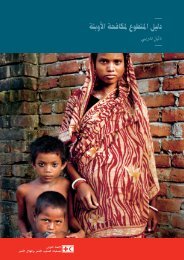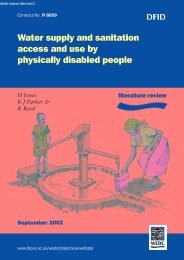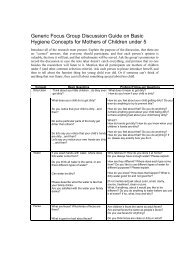Hygiene Promotion - IRC International Water and Sanitation Centre
Hygiene Promotion - IRC International Water and Sanitation Centre
Hygiene Promotion - IRC International Water and Sanitation Centre
Create successful ePaper yourself
Turn your PDF publications into a flip-book with our unique Google optimized e-Paper software.
Appendix 11. SARARhttp://www.who.int/docstore/water_sanitation_health/Environmental_sanit/PHAST/phast96-11/PHASTAnnexD.htmSARAR is an education/training methodology for working with stakeholders at differentlevels to engage their creative capacities in planning, problem solving <strong>and</strong> evaluation. Theacronym SARAR st<strong>and</strong>s for the five attributes <strong>and</strong> capacities that are considered theminimum essentials for participation to be a dynamic <strong>and</strong> self-sustaining process:Self-esteem: a sense of self-worth as a person as well as a valuable resource fordevelopment.Associative strength: the capacity to define <strong>and</strong> work toward a common vision throughmutual respect, trust, <strong>and</strong> collaborative effort.Resourcefulness: the capacity to visualize new solutions to problems even against theodds, <strong>and</strong> the willingness to be challenged <strong>and</strong> take risks.Action planning: combining critical thinking <strong>and</strong> creativity to come up with new, effective,<strong>and</strong> reality-based plans in which each participant has a useful <strong>and</strong> fulfilling role.Responsibility: for follow-through until the commitments made are fully discharged <strong>and</strong>the hoped-for benefits achieved.SARAR is based on the principle of fostering <strong>and</strong> strengthening these five attributesamong the stakeholders involved in the evaluation. Such a process will enable thedevelopment of those people's own capacities for self-direction <strong>and</strong> management <strong>and</strong> willenhance the quality of participation among all of the stakeholders.The various SARAR techniques can be grouped into five categories according to how theyare most commonly used. While there is no set order in which these techniques are used,the five types of techniques are often applied progressively, having a cumulative effect.Creative techniques involve the use of open-ended visual tools such as mapping <strong>and</strong> nonserialposters to encourage participants to break out of conventional ideas <strong>and</strong> routineways of thinkingInvestigative techniques such as pocket charts are designed to help participants do theirown needs assessment by collecting <strong>and</strong> compiling data on problems <strong>and</strong> situations intheir communityAnalytical techniques including three pile sorting <strong>and</strong> gender analysis tools enableparticipants to prioritise problems <strong>and</strong> opportunities <strong>and</strong> to examine a problem in depth,allowing them to better underst<strong>and</strong> its causes <strong>and</strong> identify alternative solutions.88 <strong>Hygiene</strong> promotion



